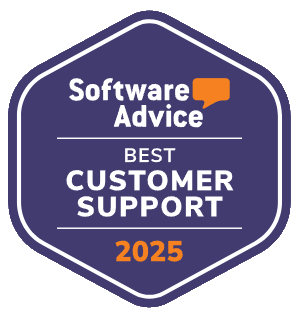Running a managed service provider (MSP) means managing multiple clients, different systems, and high service demands. A single missed SLA or delayed ticket can quickly damage client trust.
To avoid this, MSPs rely on a toolkit that keeps workflows efficient and service delivery consistent. The right tools don’t just reduce errors, they help teams scale without losing control.
In this blog, we’ll cover five essential MSP tools. At the centre of this toolkit is the helpdesk platform. It’s where every request, escalation, and client interaction is tracked. This is also where Supportbench excels, offering MSP-focused features like SLA automation, multi-tenant management, and seamless integrations.
At a Glance:
MSPs need five essential tools to stay efficient and reliable: a helpdesk & ticketing system, PSA software, RMM tools, network monitoring platforms, and documentation management. Supportbench serves as the core helpdesk solution, offering SLA automation, multi-tenant support, and seamless integration with other MSP tools to simplify workflows and strengthen client relationships.
1. Helpdesk & Ticketing System

For MSPs, the helpdesk is the foundation of operations. It keeps every request, SLA, and client record organized in one place. Without a reliable ticketing system, it’s easy for issues to fall through the cracks and for SLA breaches to occur.
A strong MSP helpdesk should include:
- SLA Management: Automated SLA tracking ensures timely responses and helps avoid penalties.
- Multi-Tenant Support: Manage multiple clients from one platform, with customized settings per account.
- Omnichannel Intake: Capture tickets from email, chat, and phone in a single system.
- Automation: Features like AI-driven routing and ticket summarization reduce manual work and speed up resolution.
Choosing a helpdesk solution for MSPs that integrates seamlessly with other tools in their tech stack is crucial. Supportbench was designed for this environment. It delivers advanced SLA automation, multi-tenant architecture, and smooth connections with PSA, RMM, and CRM platforms—making it a dependable core system for MSPs.
➤ Book a personalized demo to see how Supportbench can simplify your ticketing workflows.
2. PSA (Professional Services Automation) Platform

A PSA platform keeps the business side of an MSP organized. It brings projects, schedules, billing, and resource planning into one place. Without it, teams often rely on spreadsheets and manual updates, slowing work and creating errors.
Well-known options include ConnectWise Manage and Autotask. These tools are standard in MSP operations and provide structure for quoting, tracking labour, and billing clients.
The real strength of a PSA shows when it integrates with the helpdesk. Tickets can move directly into project workflows or time-logging systems, reducing duplication and keeping records accurate.
Supportbench connects seamlessly with leading PSA platforms. This means your service delivery and business processes stay aligned, giving MSPs reliable visibility from ticket creation through to billing.
3. RMM (Remote Monitoring & Management) Software

RMM software is critical for MSPs because it monitors client systems continuously. It lets technicians push updates, deploy patches, and handle fixes remotely—cutting down on costly onsite visits. By automating routine maintenance, RMM tools act as the first line of defence against system downtime.
The real advantage comes when RMM integrates with the helpdesk. Alerts from an RMM platform can generate tickets automatically, which speeds response times and keeps a full record of each issue.
Supportbench makes this possible. For example, an alert from NinjaRMM or another RMM system can trigger a ticket directly in Supportbench. That means faster resolutions, fewer manual steps, and complete visibility into ticket history.
4. Network Monitoring & Alerting Tools

Network monitoring tools like PRTG, SolarWinds, or Nagios give MSPs constant visibility into uptime, bandwidth, and service stability. These tools detect issues such as router failures or unusual traffic spikes before clients even notice. Staying proactive in this way prevents small problems from becoming service disruptions.
The value grows when monitoring tools link directly to the helpdesk. If an outage is detected, an automated ticket ensures the issue is logged, assigned, and tracked without relying on a technician to watch dashboards.
Supportbench integrates seamlessly with monitoring systems, routing alerts into the ticket queue. This keeps workflows efficient, shortens mean time to repair, and reassures clients that their systems are protected around the clock.
5. Documentation & Knowledge Management

When technicians don’t have quick access to procedures or client-specific details, delays happen. Disorganized documentation leads to longer resolution times and inconsistent service. A centralized, searchable knowledge base solves this by giving teams and clients the answers they need, right when they need them.
For MSPs, strong documentation also helps new hires ramp up faster and ensures standardized processes across accounts. Even clients benefit through self-service options that reduce ticket volume.
Supportbench includes a built-in knowledge base, eliminating the need for separate licensing. Articles, troubleshooting steps, and onboarding guides can be linked directly to tickets, helping agents resolve cases faster while improving consistency across the board.
The following table provides a quick overview of the five essential tools for MSPs and how Supportbench enhances each category.
Top 5 MSP Tools at a Glance | ||
Tool | Core Purpose | Supportbench Role |
| Helpdesk & Ticketing System | SLA-Aware Client Support | Central Support System with SLA, AI, Multi-Tenant |
PSA Platform | Project and Billing Operations | Seamless Integration with Helpdesk |
| RMM Software | System Monitoring, Remote Maintenance | Alert-to-Ticket Automation |
Network Monitoring & Alerting | Uptime and Performance Tracking | Alert Linking with Support Workflows |
| Documentation & Knowledge | Self-Serve and Internal Reference | Built-In, Searchable Knowledge Base |
Conclusion
MSPs thrive when their tool stack works together—keeping client communication clear, SLAs on track, and systems monitored without constant manual effort. The five tools covered here (helpdesk and ticketing, PSA, RMM, network monitoring, and documentation) form the backbone of efficient, scalable service delivery.
Supportbench acts as the hub of this toolkit. With multi-tenant support, SLA automation, AI-powered workflows, and seamless integrations, it ties all these systems together into a single, manageable platform. That means less switching between tools and more time spent strengthening client relationships.
Ready to see how the right helpdesk can streamline your MSP operations?















